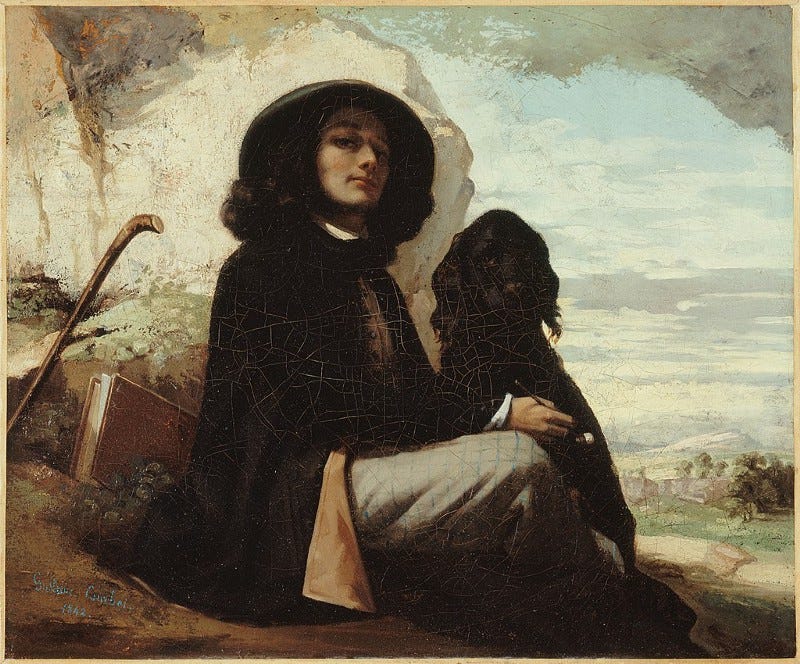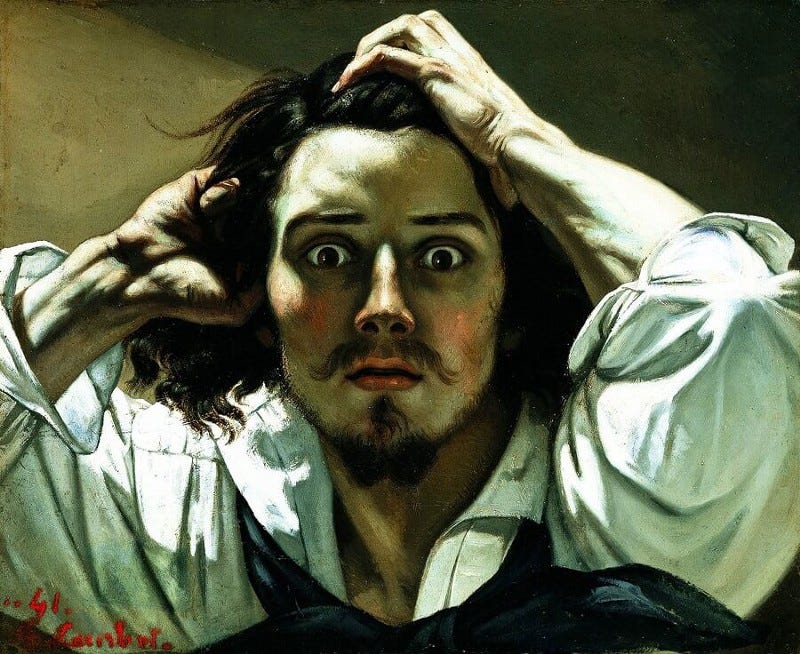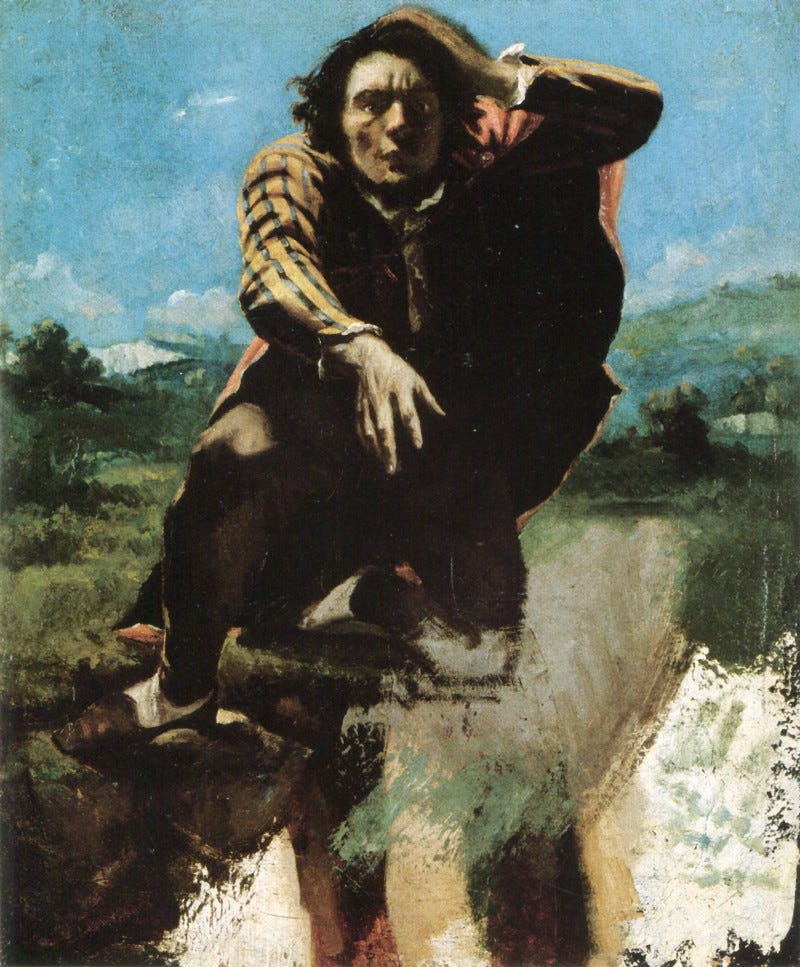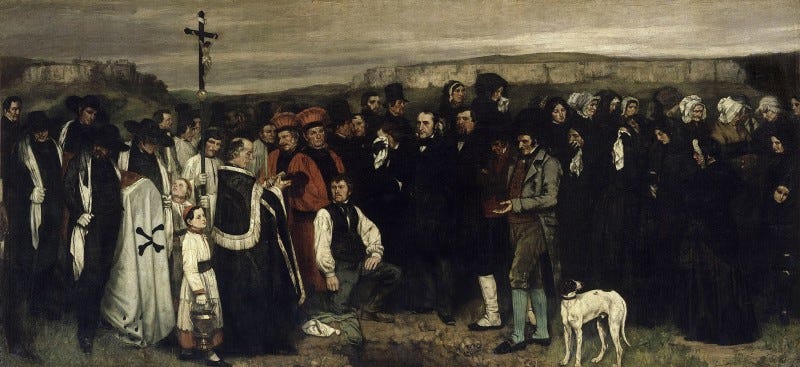Courbet — A Desperate Man or a Troubled Genius?
Edition #20 - The 19th Century doppelganger of Johnny Depp
Hello friends,
I have some news for you.
I just published my first e-book on Gumroad - 'Beyond Beautiful - 25 Paintings You Should Not Miss.’
Pick your free copy and I’d love to hear your thoughts.
Courbet — A Desperate Man or a Troubled Genius?
Two roads diverged in a wood, and I —
I took the one less traveled by,
And that has made all the difference— Robert Frost
Why do deep thinkers, intellectuals, or artists often leave an exceptionally unforgettable body of work?
They break norms and follow unconventional paths.
Challenge the status quo.
And pursue things that seem controversial to the general public.
Gustave Courbet was one such artist.
He tried to make the Paris Salon happy, created paintings to match their academic requirements. For instance — Self-Portrait with a Black Dog (1842) was one of his first paintings exhibited by the Salon.
As a resting traveler, Courbet sits in a black cape and hat near a rocky landscape. He displays a powerful gaze to the audience.
But his work stood out when he got tired of pretentiousness and tried to depict truth and not beauty.
The Desperate Man caught more eyeballs than ever. It transformed his artistic career forever.
A ridiculously wild and shocking gaze on Courbet’s face that we can’t miss. Courbet presents himself in a tight, claustrophobic, and horizontal frame.
He is wearing a blousy shirt with a blue smock, staring straight at you, clutching his messy hair and tearing it apart. His beautiful red lips are slightly parted.
Is he scared, shocked, or angered? The pool of emotions is captured exceptionally well in this portrait. Notice the swelling of nerves in his hands and his red cheeks.
This portrait remained in the artist’s studio until his death.
The Desperate Man became a benchmark painting to narrate the negative emotions of humans — despair, hopelessness, or desperation.
Redditors call Courbet— “a 19th-century desperate doppelganger of Johnny Depp”.
After this magnum opus, Courbet dabbled with other confrontational portraits too. Man Mad with Fear (1843) came around the same time.
In this scene, he stands near the edge of an abyss and showcases similar gestures of fear, shock, and the looming threat of failure.
Courbet produced one masterpiece after another.
The painting A Burial at Ornans (1851) was hammered by traditional cliché.
A life-size painting of a rural funeral scene. And that too with real-life lower-class people as his muses.
Courbet said: “The Burial at Ornans was in reality the burial of Romanticism.”
Courbet rejected conventionalism. His agonizing self-portraits are a testimony to it. A troubled genius he was.
What do you think about The Desperate Man? Let me know in the comments.
Thank you for subscribing and supporting my newsletter. Both free and paid subscriptions are available. The best way to support my work is through a paid subscription.







